Preserved duck egg congee or century egg congee is a Chinese-style congee made with marinated pork strips and bite-sized chunks of century egg. In Cantonese, it is called ‘pei dan sau yuk jok’ and it’s my favorite Chinese congee of all time. When life comes at me in full force, I seem to crave food that triggers a memory of simpler times and lately what comforts me is a simple homey meal like a bowl of this congee. If you need a pick-me-up or you simply want flavors that remind you of home, give this congee a try!

Why you’ll love this recipe
This century egg congee is surprisingly light yet delightful, with pockets of umami bombs from the marinated pork and century egg exploding through your mouth in each bite. Traditionally, congee is made with rice grains. However, to speed things up, I used day-old cooked rice to prepare this congee which is also a great way to use up leftover rice. Using pre-cooked rice will only require 45 minutes to prepare this congee, which is a game changer since congee usually takes quite a long time to make.
Additionally, this congee is meal-prep friendly. You can make a big batch, store it in the fridge for later, and reheat it when ready to serve! You’ll have a hot bowl of congee ready in no time.
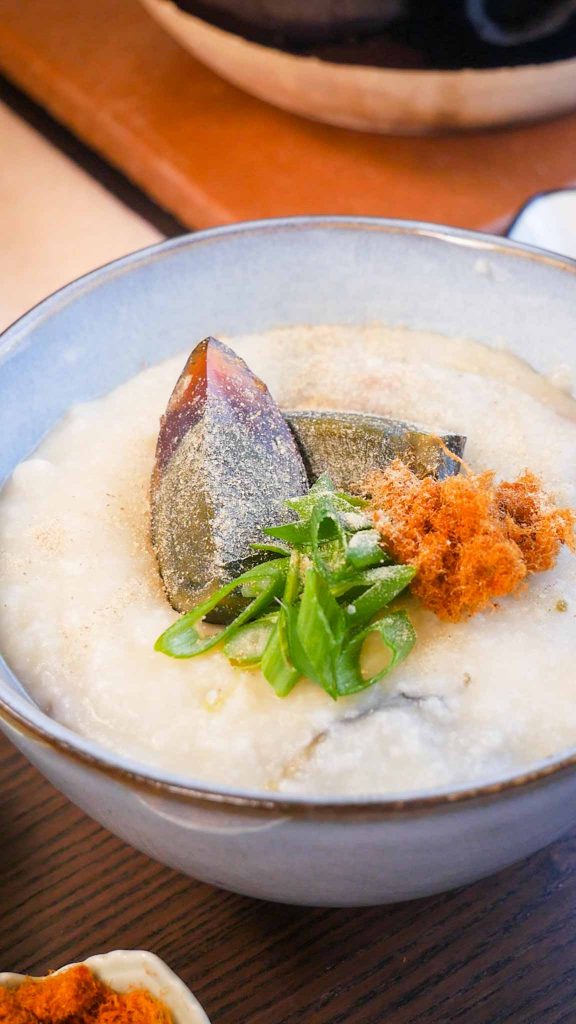
What is Preserved Duck Egg (Century Egg)?
Century egg or preserved duck eggs is a Chinese delicacy made by curing duck eggs in a mixture of clay, ashes, salt, sugar, rice hulls, and quicklime or calcium oxide. This curing process creates a chemical reaction that develops the eggs into a deep-colored jelly-like texture, with a distinct strong pungent smell. As for the flavor, it is savory, funky, and mildly salty. Preserved duck eggs can be consumed on their own or as additional ingredients for noodles, soup, or congee, like what I did for this recipe!
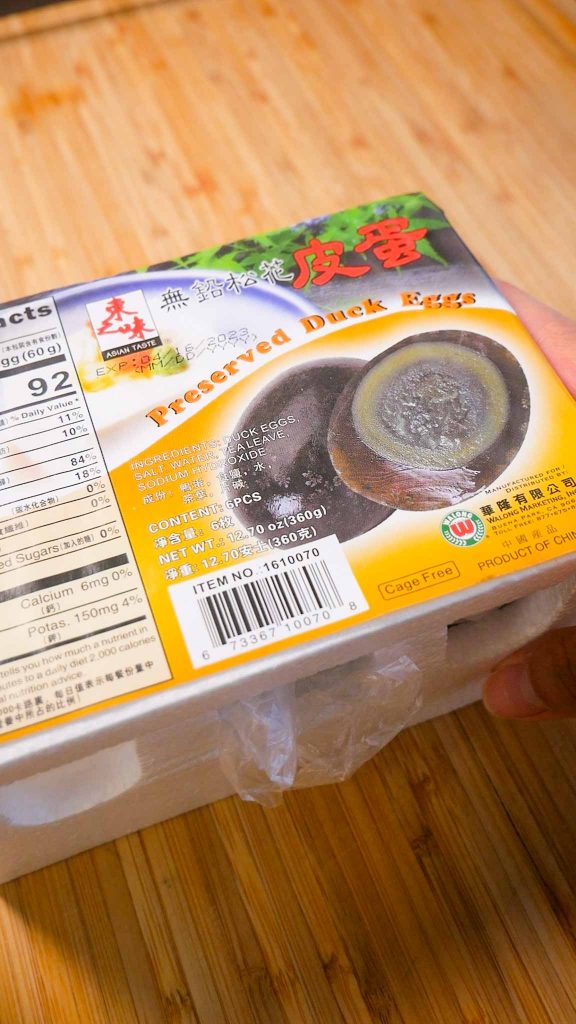
Preserved Duck Egg Congee Ingredients & Substitutions
Cooked long-grain rice: I like to use long-grain rice for Chinese-style congee but you can also use short-grain or medium-grain rice.
Water: Used to cook the rice to make congee
Salt: For seasoning
Ginger: For seasoning and aroma; Adds warmth and spice to the congee, making it extra delicious and comforting
Preserved duck eggs: Also called century eggs; this egg is preserved for several months in a mixture of salt and clay. The texture of the eggs becomes gelatinous and the flavor develops into something slightly salty, aromatic, and umami-rich. They can be found in the refrigerated section at your local Chinese market.
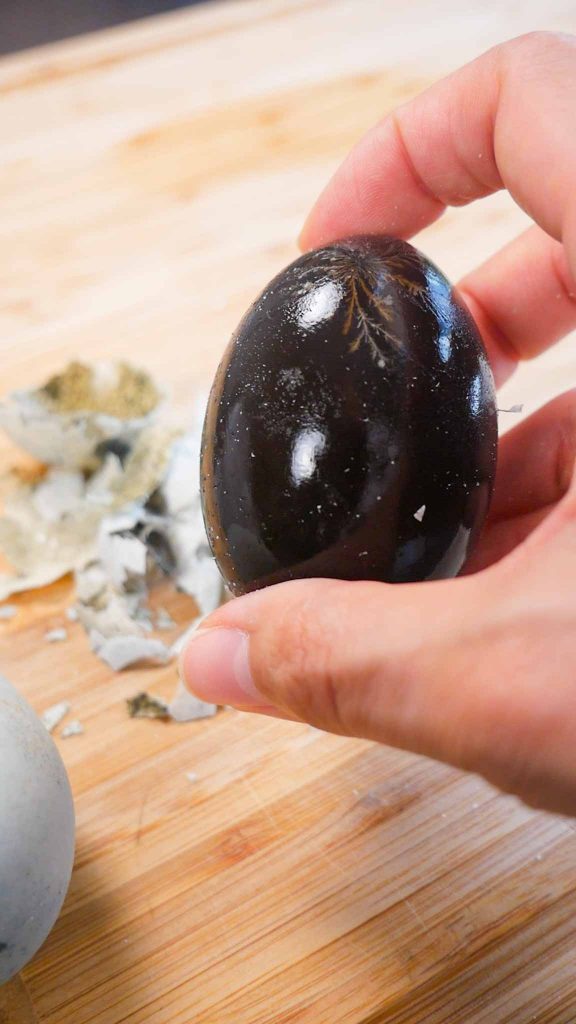
Pork Marinade Ingredients & Substitutions
Pork shoulder: Aside from the preserved duck eggs, pork is another main component in the congee. It’s important to cut them into thin strips to allow the marinade to penetrate deeper and quicker and it also helps to tenderize the pork. I like using pork shoulder because it has a good meat-to-fat ratio, however, you can also use pork loin as a leaner option.
Soy sauce: For seasoning; it adds flavor and umami to the pork. I like using soy sauce by Pearl River Bridge.
Shaoxing cooking wine: Enhances the flavor and aroma of the pork and also helps to tenderize the meat
Sugar: Balances out the salty and savory flavors
Garlic powder: For seasoning the pork
Onion powder: For seasoning the pork
Chicken bouillon powder: Also for seasoning the pork; it packs the pork strips with umami and savory flavor. I recommend using Lee Kum Kee brand.
Garnish Ingredients & Substitutions
Chopped scallions: For added freshness, bright color, and a mild onion flavor
White pepper powder: For added spice and peppery flavor
How to Prepare Preserved Duck Egg Congee
Step 1: Prepare congee
In a pot, add rice, water, salt, and neutral oil. Stir until thoroughly mixed. Heat over medium heat and bring to a boil. Once boiling, reduce the heat to low. Let this simmer for 30 minutes, making sure to stir every 10 minutes to prevent the rice from sticking or burning on the bottom.
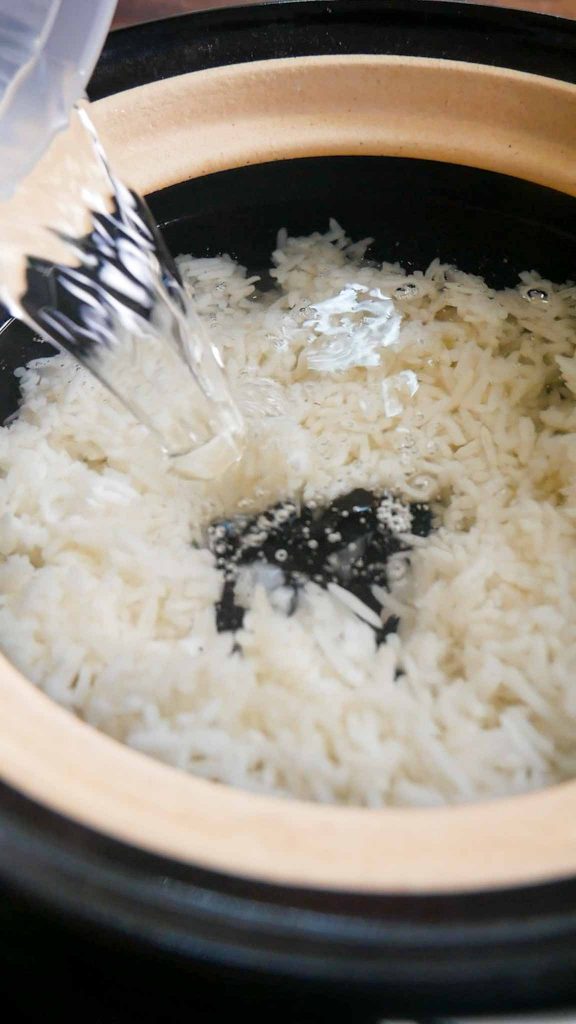
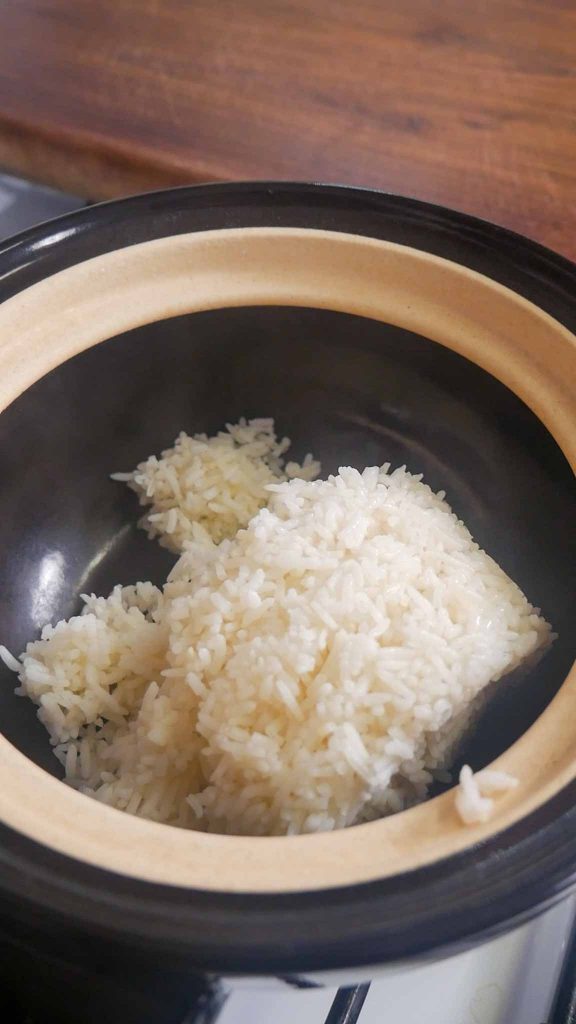
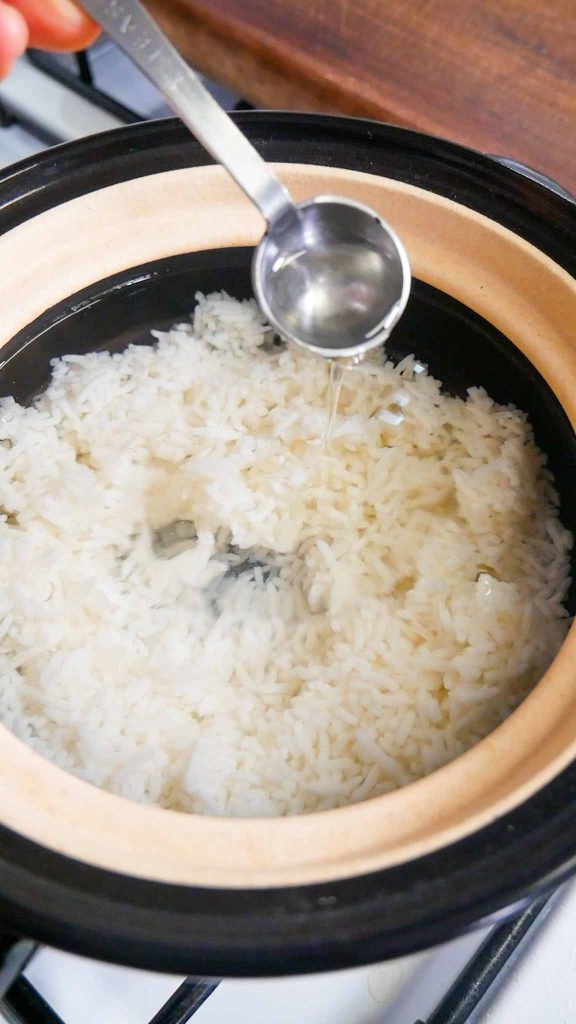
Step 2: Marinate pork
While the rice is cooking, prepare the pork marinade. In a small mixing bowl, combine the thinly sliced pork, soy sauce, Shaoxing cooking wine, sugar, garlic powder, onion powder, and chicken bouillon powder. Mix until well combined. Set this aside in the fridge to marinate.
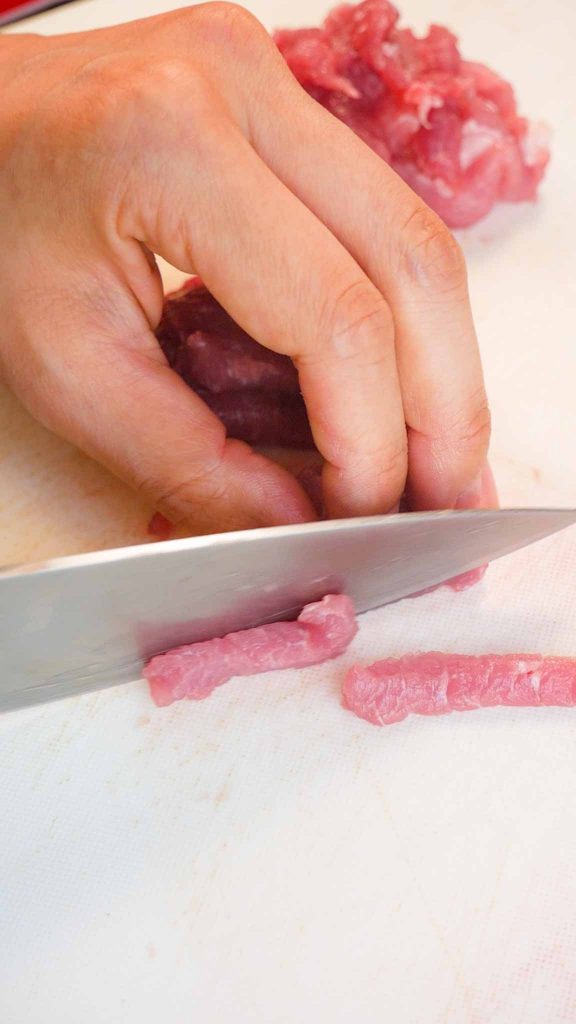
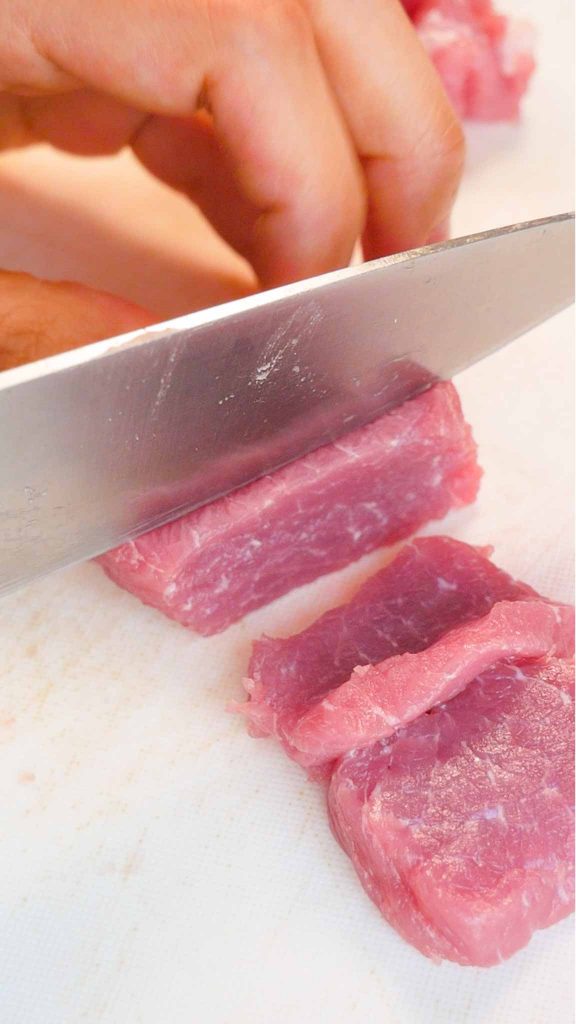
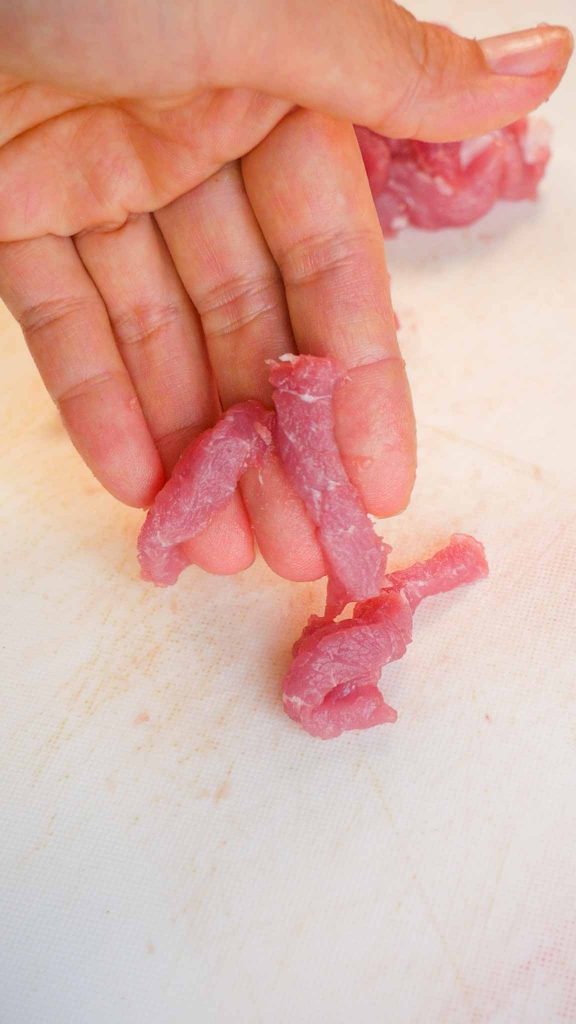

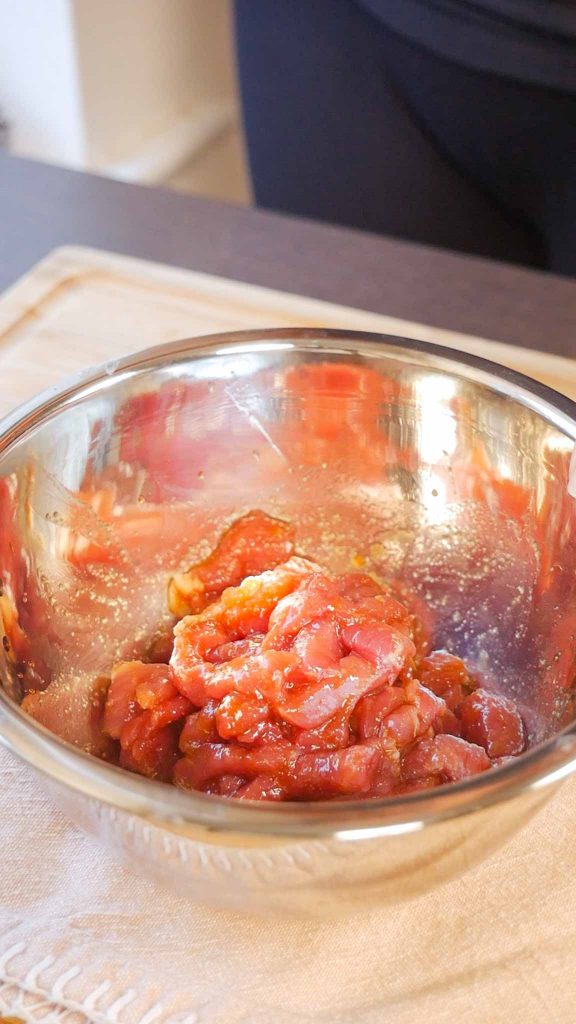
Step 3: Prepare duck eggs
Peel the duck eggs then slice them into bite-sized pieces.
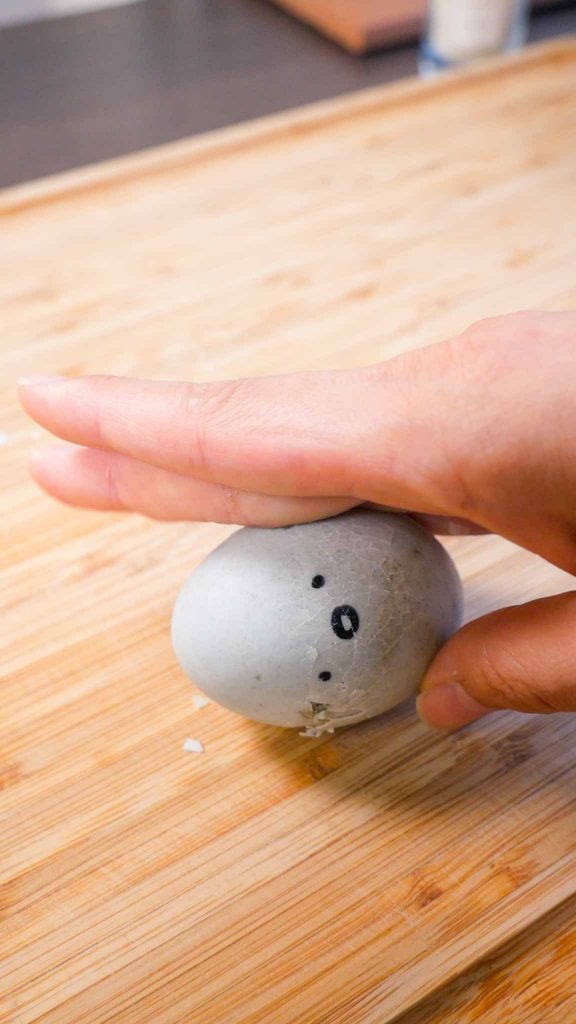

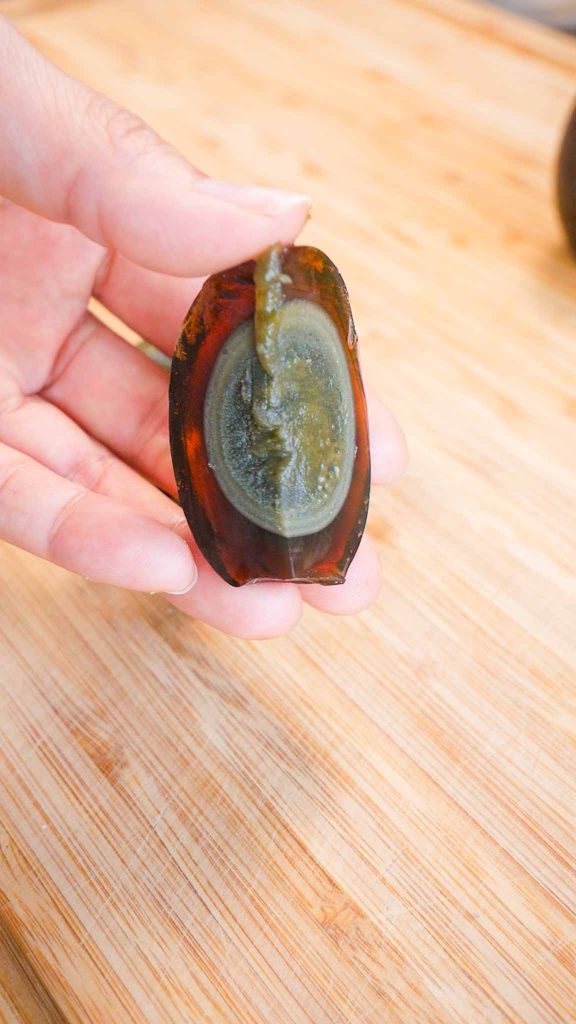
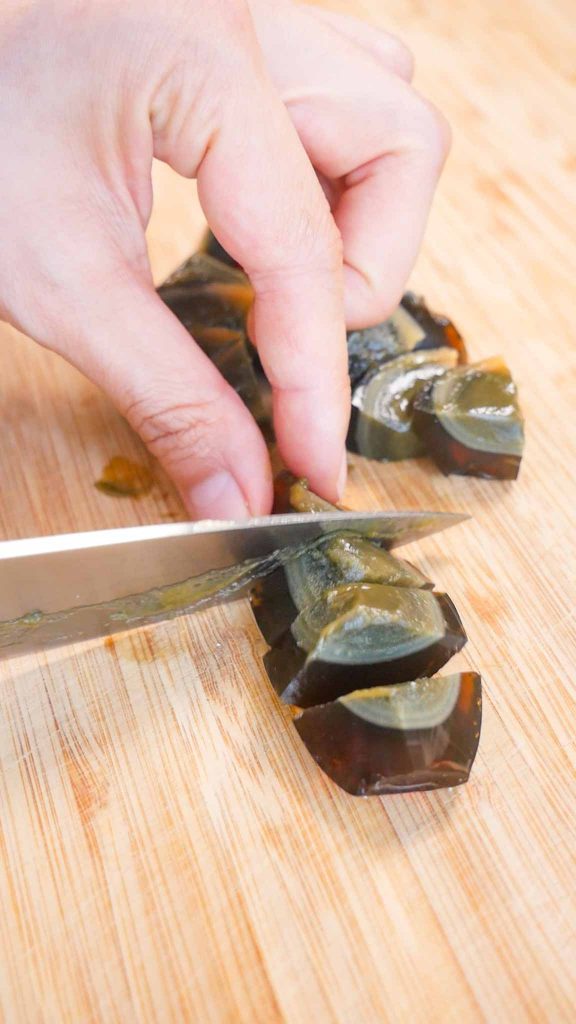
Step 4: Check congee consistency
After 30 minutes, check on the rice for consistency. It should be very starchy and the rice grains should be very small. If it isn’t thick enough, let it simmer for an additional 10 minutes. If it’s too thick, add a few tablespoons of water to loosen it up.
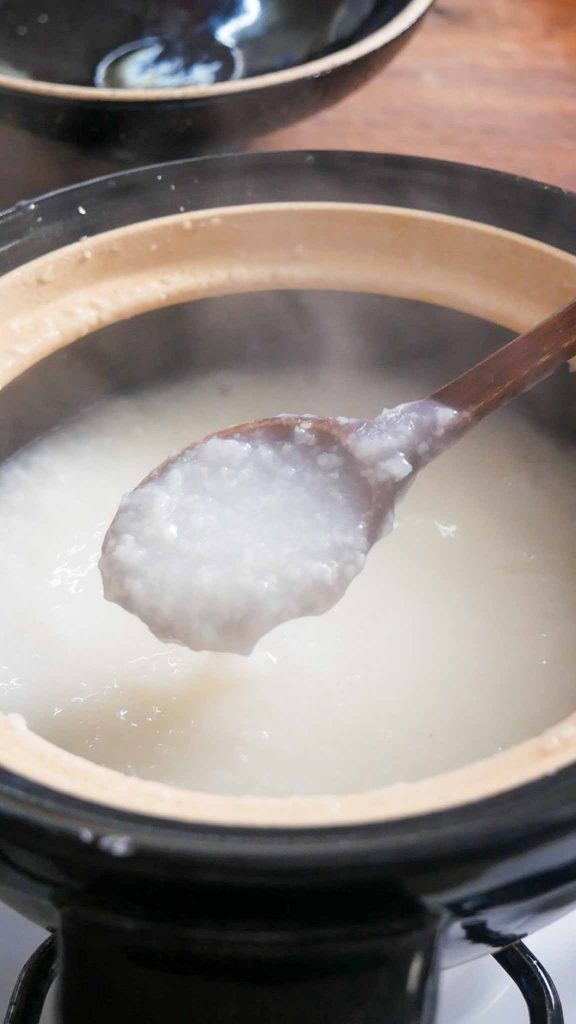
Step 5: Add congee ingredients
When the consistency is to your liking, add the marinated pork, ginger, and preserved duck eggs. Mix until the pork has fully cooked, about 3 to 4 minutes.
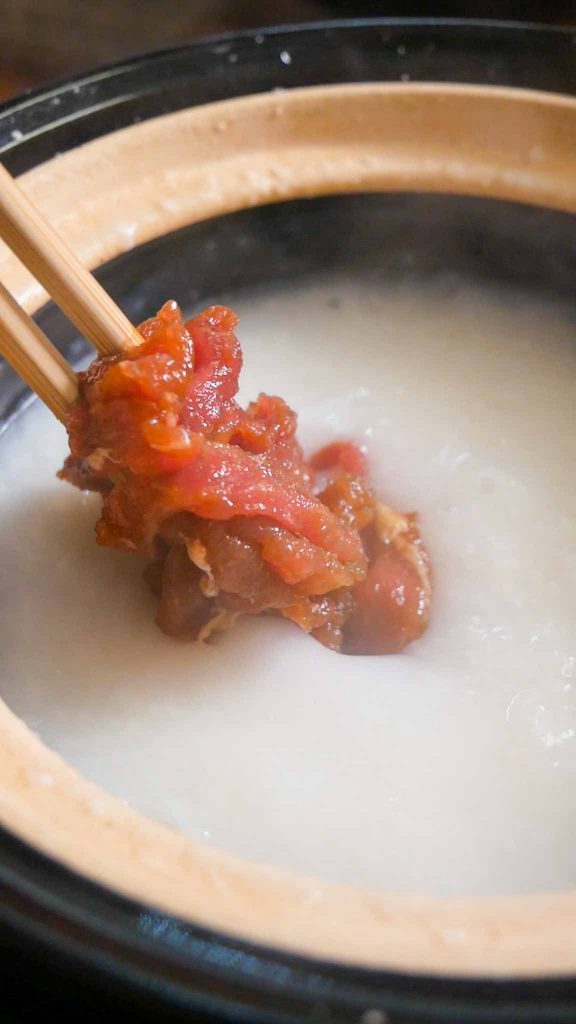

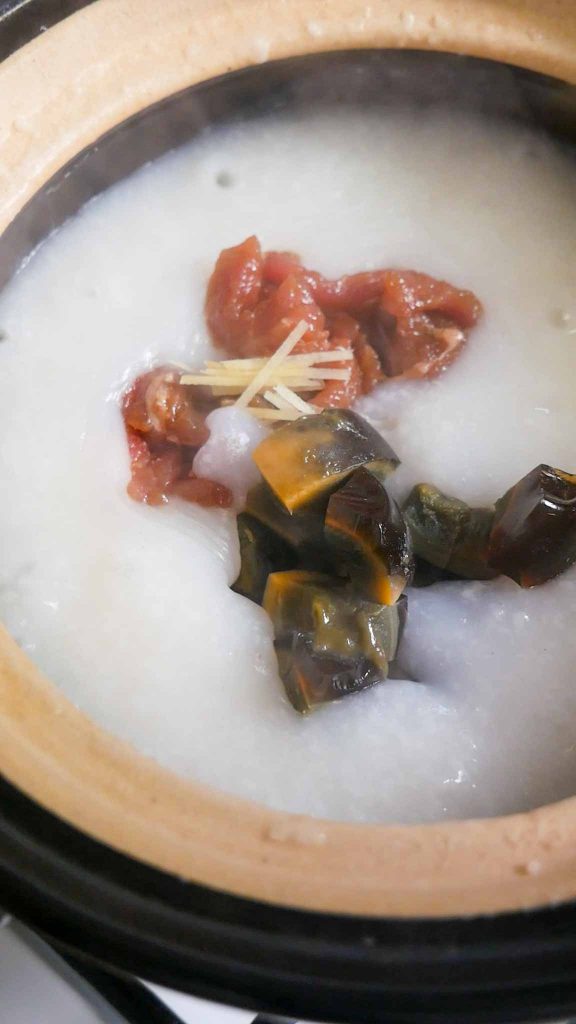

Step 6: Garnish & serve
Serve with chopped scallions and white pepper powder. Enjoy!
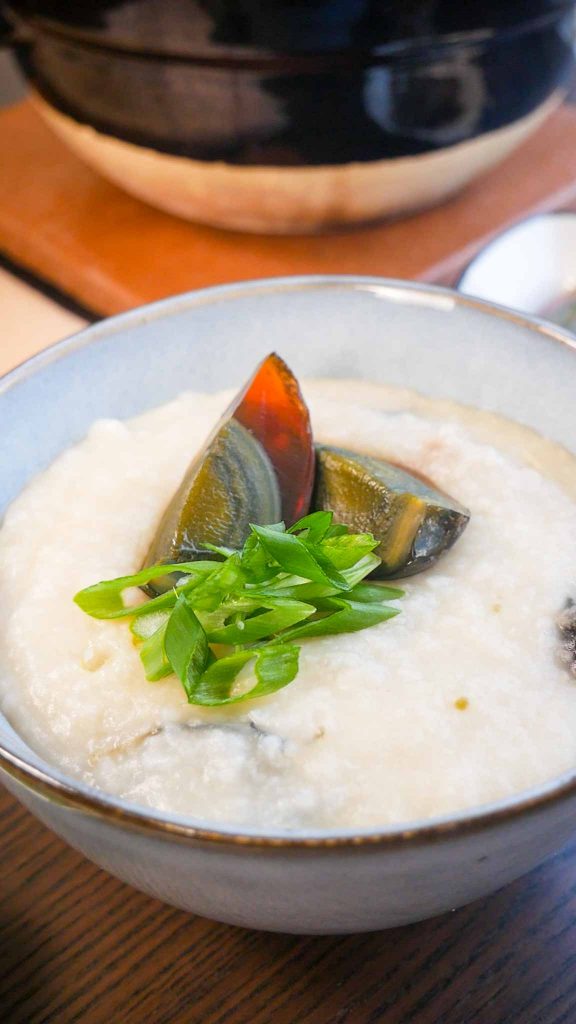
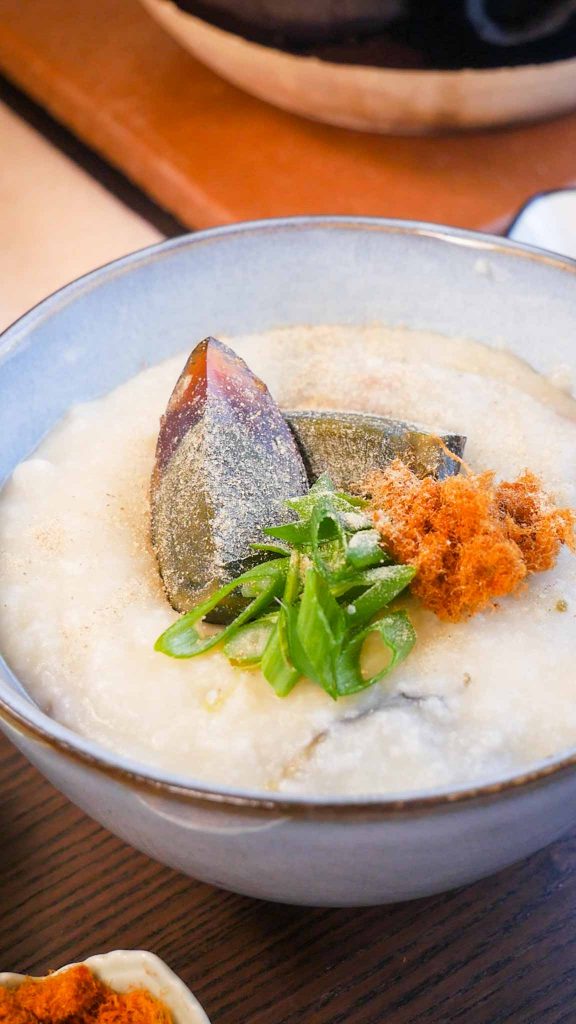
Preparation Tips for Preserved Duck Egg Congee
Here are some helpful tips for making the best preserved duck egg congee every time.
- Stir the mixture frequently while cooking. This will prevent the congee from sticking to the bottom of the pan and burning.
- If your congee is too thick simply add a splash of water until it reaches your desired consistency. On the other hand, if the mixture is too loose, just let it simmer for a few minutes until it thickens up.
- For a vegetarian option, you can substitute the pork with mushrooms or skip the pork completely. You can also substitute the pork with chicken or beef.
- If making a big batch for meal prep, first, cool the congee to room temperature. Then ladle them into portion-size containers and transfer them to the fridge. You can either reheat it in the microwave or over the stovetop. The congee will thicken up as it sits so you may need to add a splash of water to loosen it up while reheating.
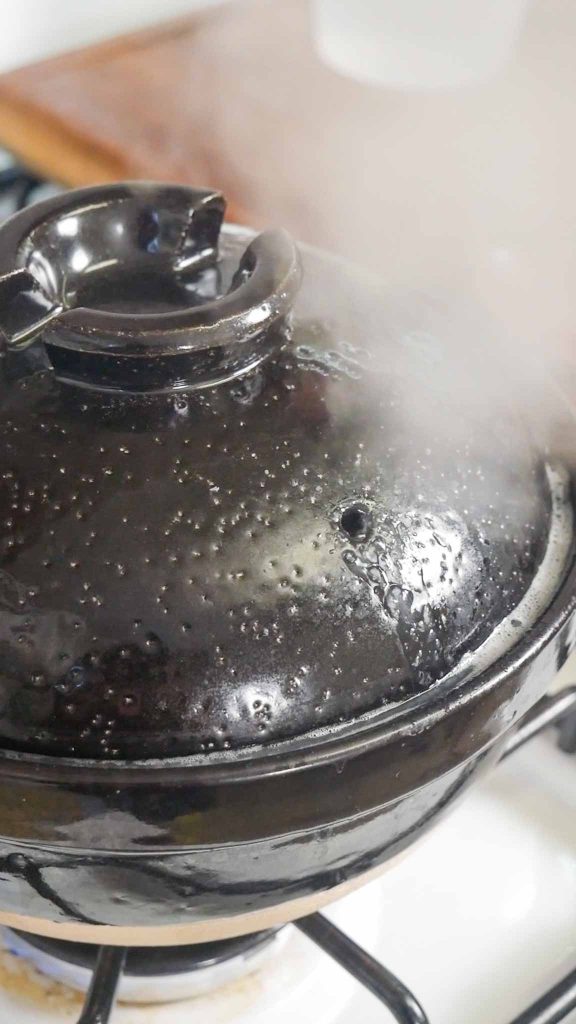
Frequently Asked Questions
What are preserved duck eggs?
Preserved duck eggs are a delicacy originating in China. It is made by curing raw duck eggs in clay, quicklime, salt, and rice hulls for several weeks up to a month. During the curing process, the egg darkens in color and develops into a jelly-like texture and a strong pungent smell with a savory and salty taste.
Can preserved duck eggs congee be made in advance?
Like with most congee, you can also prepare preserved duck eggs congee in advance. Simply, prepare the congee according to the recipe instructions and allow it to cool to room temperature. Transfer to individual portion containers and store in the fridge for up to 4 days. If adding toppings to the congee, I recommend keeping them separate and top right before serving.
What toppings can I put over congee?
There’s a wide variety of toppings you can put over congee to make it even more delicious. For freshness, you can add chopped scallions, chives, or cilantro. For more protein, dried pork floss would be great. For some crunch, you can add fried shallots, fried garlic, or sesame seeds. If you are a fan of spicy food, you can top it with chili oil!
How can preserved duck egg congee be stored?
Store the congee in an airtight sealed container. Plastic takeout containers also work well as they are great for portioning. It’ll stay good in the fridge for up to a week or in the freezer for up to a month.
How can preserved duck egg congee be reheated?
To reheat, simply blitz it in the microwave on high for a minute or until fully heated through. You can also reheat the congee on the stove for a few minutes 3-5 minutes or until it reaches a gentle simmer. If the congee is too thick, add a splash of water to loosen it up.
Are preserved duck eggs safe to eat?
Yes, preserved duck eggs are safe to eat. The brining or curing process itself already inhibits the growth of potentially harmful bacteria. In addition, the century egg is cooked together with the congee. But just like any other food, century eggs can go bad. Signs of spoilage to watch out for include cracked shells, slimy texture, any liquid seeping out of the shells, and a foul odor. If you see any of these signs of spoilage, discard and do not consume the egg.
Is a century egg healthy?
Century egg is a good protein source. It is also rich in Vitamin B12 which is vital in the production of red blood cells. However, due to its preparation process, century eggs have a high sodium content. Therefore, it’ll still be best to consume them in moderation. Treat them as a delicacy and not as a part of your daily diet.
Should preserved duck eggs be refrigerated?
Store-bought packaged century eggs usually don’t need to be refrigerated but I recommend keeping them stored in the fridge to extend their shelf life. Once the shells have been peeled off the eggs, they must be stored in the fridge and used within 2 days.

Looking for more easy and delicious rice recipes?
Cup Ramen Noodles Fried Rice Recipe — If you love instant ramen and fried rice, this Cup Ramen Noodles Fried Rice recipe is for you! It’s a combination of my favorite meals made of crispy toasted instant noodles and fluffy fried rice served with scallions, eggs, corn, and shallots.
Spam Rice Balls — These delicious Spam rice balls are made with musubi-inspired Spam, eggs, and rice for a quick and easy meal. They are small flavor bombs that will satisfy your appetite and fill your tummy!
Chinese Shrimp Fried Rice — With the combination of succulent shrimp, lightly seasoned rice, a medley of vegetables, and signature Chinese sauces, this shrimp fried rice is guaranteed to hit the spot every time! Best of all, everything comes together in just 30 minutes!
Ikura Don — This salmon roe rice bowl or ikura don is made of marinated salmon roe and served over a bed of rice. These jewel-like beads are marinated in a delicious soy dashi sauce and burst with flavor in every bite. It’s rich, salty, briny, oceany, and exploding with umami flavors!
Spicy Tuna Salad with Crispy Rice — If you’ve ever craved the viral spicy tuna crispy rice but don’t want the sushi-grade or restaurant price tag that it comes with, this dupe is for you! Not only is this canned tuna version more accessible and convenient, it’s absolutely delicious!
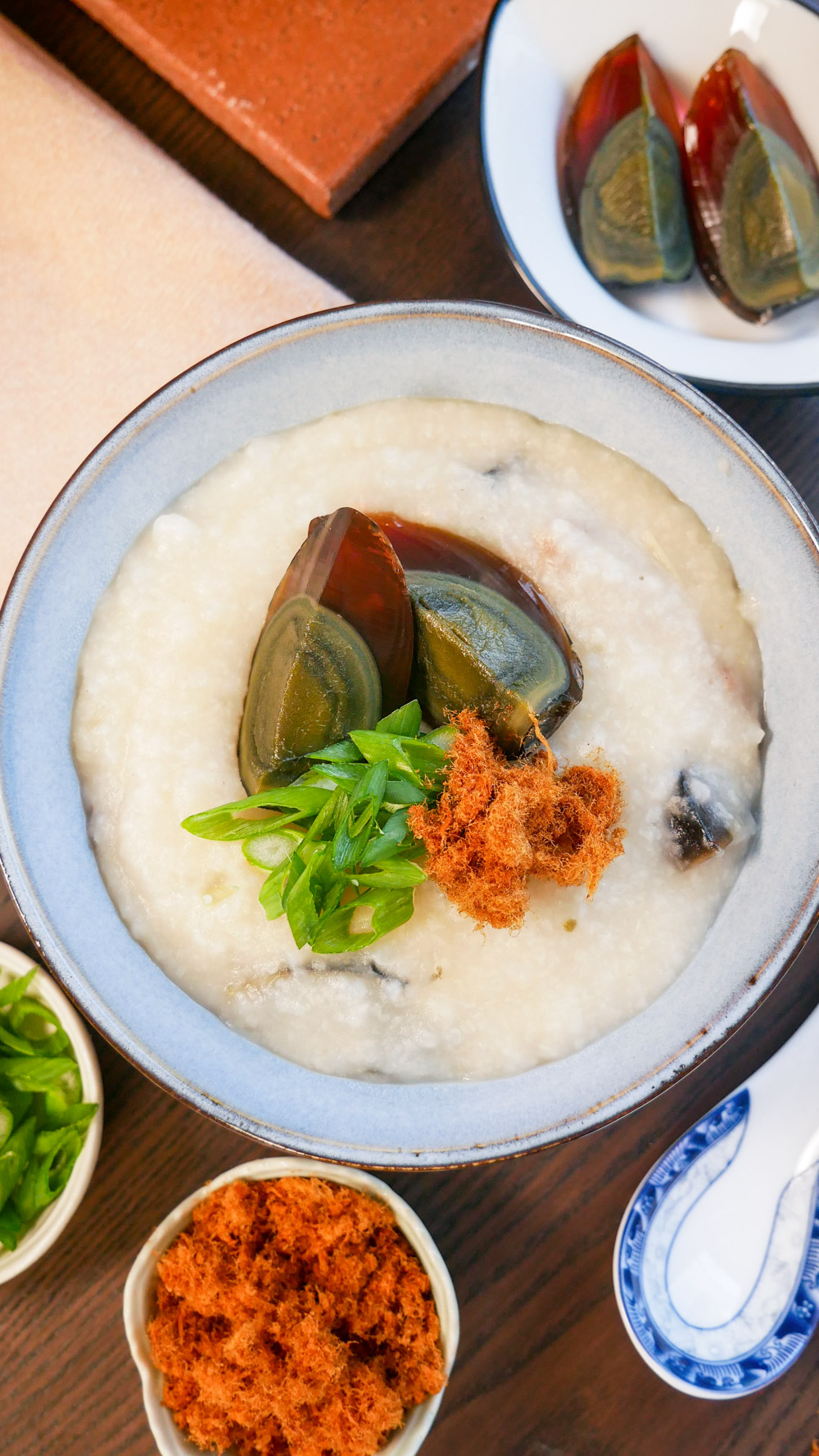
Preserved Duck Egg Congee
Ingredients
- 2 cups cooked long grain rice substitute with 1 cup uncooked long grain rice
- 6 cups water more if needed
- 1/2 tsp salt
- 1 tsp neutral oil
- 1 slice of ginger thinly sliced into matchsticks
- 2 preserved duck eggs also called century eggs
Pork Marinade
- 4 oz pork shoulder thinly sliced, substitute with pork loin
- 1 tbsp soy sauce
- 1 1/2 tsp Shaoxing cooking wine
- 3/4 tsp sugar
- 1/4 tsp garlic powder
- 1/4 tsp onion powder
- 1/4 tsp chicken bouillon powder
Garnishes
- chopped scallions optional
- white pepper powder optional
Instructions
- In a pot, add rice, water salt, and neutral oil. Stir until thoroughly mixed. Heat over medium heat and bring to a boil. Once boiling, reduce the heat to low. Let this simmer for 30 minutes, making sure to stir every 10 minutes to prevent the rice from sticking or burning on the bottom.
- While the rice is cooking, prepare the pork marinade. In a small mixing bowl, combine the thinly sliced pork, soy sauce, Shaoxing cooking wine, sugar, garlic powder, onion powder, and chicken bouillon powder. Mix until well combined. Set this aside in the fridge to marinate.
- Peel the duck eggs then slice them into bite-sized pieces.
- After 30 minutes, check on the rice for consistency. It should be very starchy and the rice grains should be very small. If it isn't thick enough, let it simmer for an additional 10 minutes. If it's too thick, add a few tablespoons of water to loosen it up.
- When the consistency is to your liking, add the marinated pork, ginger, and preserved duck eggs. Mix until the pork has fully cooked, about 3 to 4 minutes.
- Serve with chopped scallions and white pepper powder. Enjoy!